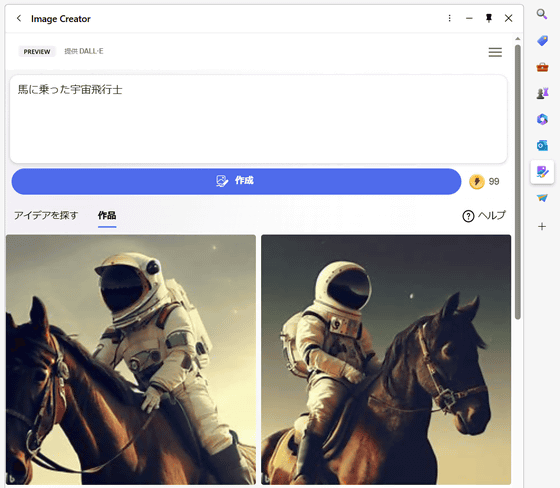With the advent of AI, the computer UI shifted to the ``third paradigm''

Advances in AI technology have made it possible to operate computers with voice and hand movements, and to predict human behavior to some extent and automatically perform processing. The Nielsen Norman Group (NN / g), a company that designs user interfaces (UIs) that connect humans and computers, explains how the UI changes with the advent of AI.
AI: First New UI Paradigm in 60 Years
https://www.nngroup.com/articles/ai-paradigm/
NN/g argues that the UI paradigm has changed to three stages: 1: batch process, 2: command-based interaction, and 3: specifying results based on intent.

Since the birth of computers around 1945, the first paradigm was 'batch processing'. In this paradigm, users specify all the workflows they want the computer to run. The mainstream method at that time was the punch card method, in which a hole was punched in a card to read the programming.
From a UI perspective, this batching does not involve direct interaction between the user and the computer. If I had to say, the punch card is the UI that connects people and the computer, but the program can be executed only after punching holes in the punch card with a punch machine and passing the punch card through a reader to read it. The work is far from user-computer interaction, it's really just a point of contact. Usability sucked, and it was not uncommon for it to take days to get the final result, with many iterations of tweaking until the desired result was achieved.

by
Around 1964, the idea of ' time sharing ', in which multiple users access a single mainframe, was born, leading to a shift to the 'command-based interaction' paradigm. In this paradigm, the user and the computer would alternate executing one command at a time. This paradigm is so powerful that it has dominated computing for more than 60 years, says NN/g.
Command-based interaction has a distinct advantage over batch processing: after each command is executed, the user can modify the command to get closer to the goal. Unlike the punch card method, which requires complete input from the beginning, commands allow you to see the results and make adjustments. Furthermore, since the Macintosh was released in 1984, the graphical user interface (GUI) that provides visual feedback from the computer has swept the world of user experience (UX).

by Antonio Marín Segovia
And with the advent of generative AI, the third paradigm of UI has changed to 'specifying results based on intent'. Whereas in command-based interaction users typed into the computer ``what to do'', in the third paradigm they typed ``what result do you want?''.
NN/g evaluates that ``do what you mean, not what you say'' is a fascinating UI paradigm, but on the other hand, ``take control initiative. Leaving everything to the computer has the disadvantage that the results are likely to contain erroneous information.' He points out that he does not know whether AI systems can achieve high usability.

NN/g says, ``Clicking and tapping on screens is an intuitive and essential aspect of user interaction that cannot be overlooked. future AI systems will have hybrid UIs that combine both intent-type and command-type elements while preserving GUI elements.”
Related Posts:
in Software, Posted by log1i_yk







